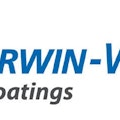Behind Forecasting Color Trends for Commercial Environments
Color isn't merely a decorative aspect; it's a cornerstone of design, especially when it comes to commercial exteriors in the building industry. Through a keen eye on evolving styles and product advancements, experts like Sherwin-Williams navigate the ever-evolving landscape of color by reviewing both macro and micro trends on a routine basis and forecasting color palettes for the industry.
The Factors that Go into ‘Trending’
In the building industry, exterior color trends refer to the outward stylizing of buildings from schools and offices to data centers and multifamily developments. Oftentimes these structures need to either seamlessly blend into their surrounding neighborhoods—or stand out. Many times color trends also reflect the collective emotions of society at large; what people are feeling in a particular time and place and how color gives meaning to those emotions.
And yet, forecasting color trends is more than predicting what color will ‘pop’ and attract the public to a particular store or setting. In the building industry, it also often extends beyond visuals to the materials used, where incorporating functionality and durability also becomes key.
How the Color Experts Do It
Sherwin-Williams’ FUSE color forecast for architectural metal coatings identifies how color is influenced by our world and environment and its implications for design for the next three to five years. Developed by the company’s color experts at the Minneapolis, Minn.-based Sherwin-Williams DesignHouse, FUSE uses real-world data from architects and product manufacturers to offer inspiration, insights into segment-specific applications and more.
The forecast is told through three color collections:
-
Accountability-Centered Technology (ACT): The advancement of technologies has come hand in hand with commitments to transparency, sustainability and efficiency in order to ensure ethical building practices. This collection represents a spectrum of colors representing themes from ultramodern to special effects.
-
Building Fulfilling Futures (BFF): Infrastructure is a core of the built environment and allows us to relate to specially designed and created spaces. Inspired by both earth’s nature and the human-driven act of construction, the hues in this collection help to build our emotional and cybernetic connections.
-
Chief Empathy Officer (CEO): Leadership and decision-making at some point will require empathy to foster a sense of collective togetherness. Evoking careful considerations and intentions, this collection makes way for high chromas, metal-inspired hues or dynamic neutrals.
Focused on the Future
As architects and designers navigate society’s evolving trends and challenges, Sherwin-Williams remains committed to pushing the boundaries of color innovation. When change is constant, experts forecast that these influences will continue to shape the landscape of commercial design. With each evolving trend that follows, companies like Sherwin-Williams empowers professionals to create dynamic, visually captivating, and resilient commercial projects that inspire and uplift. At the DesignHouse, advisors are on deck to work with architects, product manufacturers and other professionals on color needs such as customized palettes, color naming and color card layouts.
The dynamic interplay between color, materials, and societal influences underscores the significance of color trends in commercial design. By embracing innovation and adaptation, AEC teams can lead the way in shaping the future of commercial environments, ensuring spaces that are not only aesthetically pleasing but also functional.


